The Calarcá dissidents: the other flank that the government faces in matters of public order

The murder of seven soldiers guarding a Territorial Reincorporation Area (ETCR) in the department of Guaviare, following an ambush, is only the most recent in a long series of violent episodes involving the Jorge Suárez Briceño bloc of Alexander Díaz Mendoza, alias Calarcá , one of the dissident groups that is based on the 'total peace' and with which the Government signed a decree suspending offensive operations - which, in essence, is a unilateral ceasefire tied to their transfer to temporary location zones for their laying down of arms.
This fact adds to the growing concern about the influence, expansion, and strengthening of these dissident groups during the year and a half that the bilateral ceasefire has been in effect. This armed organization has not only attacked the security forces but has also been accused of intimidating, displacing, and murdering former combatants who signed the Peace Agreement in different regions of the country, in addition to extorting merchants and ranchers. Their violent actions have called into question the viability of the dialogue process they are currently undertaking with the government .
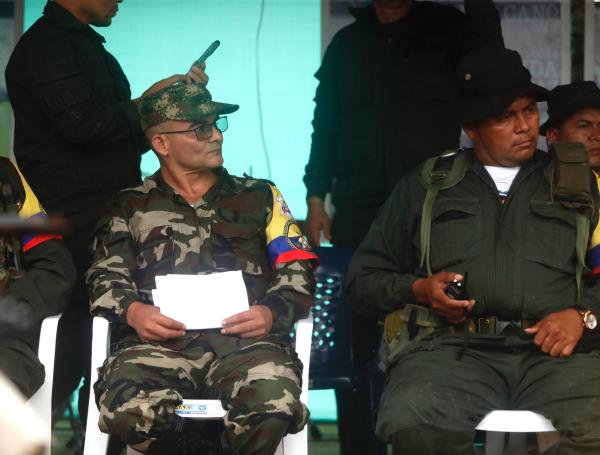
Alias Iván Mordisco y Calarcá. Photo: EFE
Although the armed group issued a statement after the attack in Guaviare, claiming to have acted in "self-defense," several actions have been reported near the ETCRs in the last year that reveal a more systematic strategy.
In March 2023, when the government had not yet opened the door to "total peace," these dissidents were responsible for the displacement of more than 200 signatories of the agreement who were living in the Mariana Páez ETCR, in Mesetas, Meta. A year later, in June 2024, in the midst of their territorial dispute with the "Segunda Marquetalia," the Iván Díaz front—affiliated with the Jorge Suárez Briceño bloc—forced the displacement of 82 people, including men, women, and children, according to figures from the Comunes party, who lived in the Miravalle ETCR, located in San Vicente del Caguán.
Although the ELN has been identified as responsible for numerous murders of former combatants following its escalation in Catatumbo, the Calarcá and Mordisco dissident groups continue to top the list of armed organizations that most frequently attack the signatories.
A month later, in July 2024, this newspaper reported how in the south of Meta - especially in Lejanías, La Uribe, Mesetas, Vistahermosa, San Juan de Arama, Castilla la Nueva, Granada and La Macarena - and in the north of Guaviare, these dissidents established an illegal monopoly with pamphlets, extortion and threats from which no merchant, landowner or contractor who wanted to carry out a project was spared.
“ Every year, the dissidents charge 10,000 pesos per hectare of land and 10,000 pesos for each head of cattle. They even charge up to 3,000 pesos for each chicken ,” a farmer from the region told EL TIEMPO.
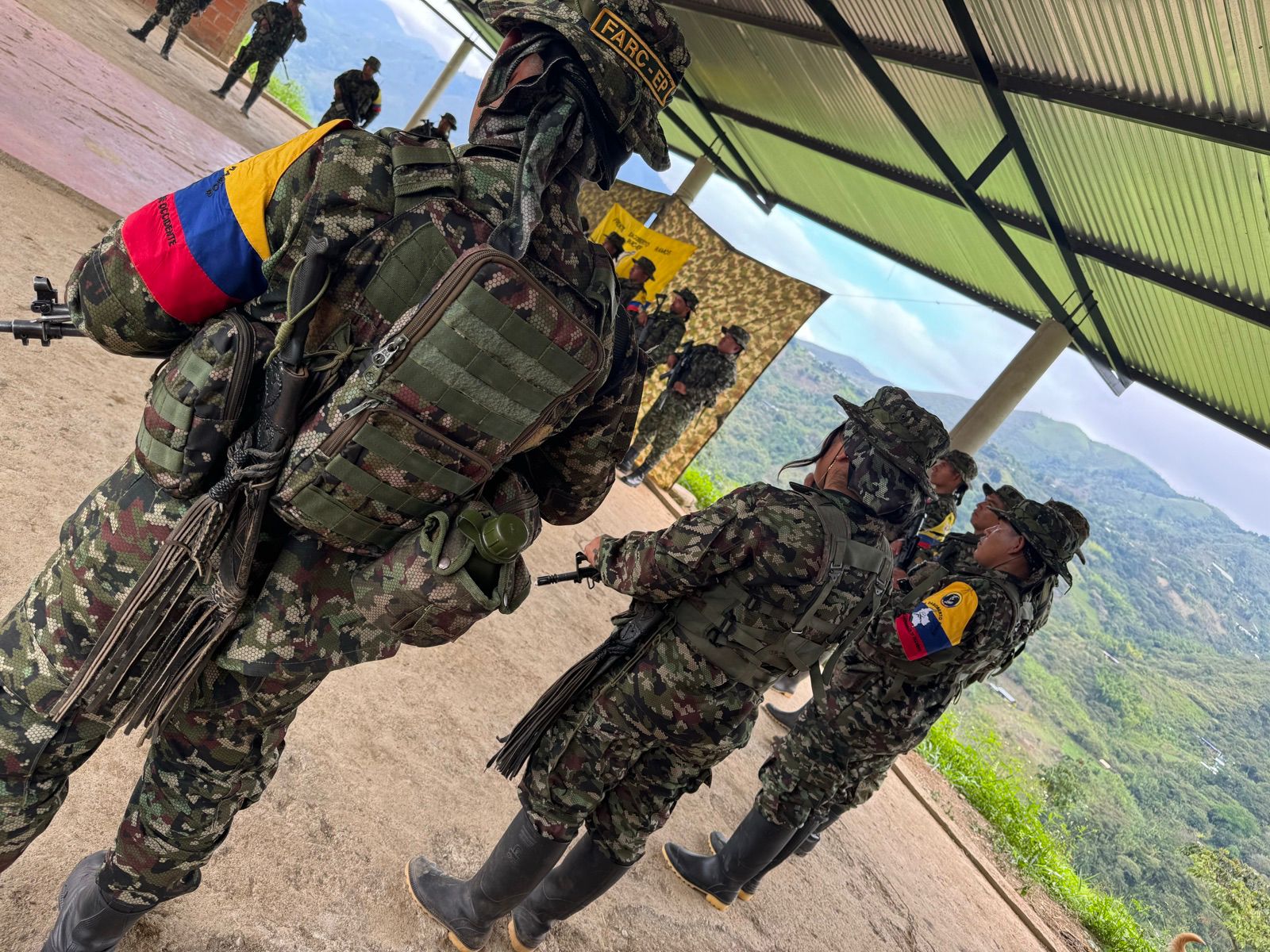
Dissidents advance strategies to recruit minors into their ranks. Photo: Private
To intimidate the population, dissidents called for mandatory meetings using leaflets bearing the seal of the Éver Castro finance commission, which spoke of fines for non-attendance. At one of these meetings, it is estimated that more than 3,200 people were forced to attend, demanding irregular "contributions" supposedly intended for the construction of bridges and other projects.
His extortion network extended to Tolima, where, until a few months ago and before being killed by law enforcement, Fabián Guillermo Espinosa Arboleda, alias Cancharino, was feeding the coffers of dissidents by intimidating farmers in the department. "His criminal career flourished due to extortion, as it brought in 4 billion pesos a month to the coffers of the bloc led by alias Calarcá," added General Nicolás Alejandro Zapata, deputy director of the National Police, on the day his death was confirmed.
But their actions have not only become a headache for the Public Force, but also for the government delegation at the negotiating table, currently led by Camilo González Posso . A clear example occurred on July 23 of last year when, at a military checkpoint on the road between Medellín and Anorí (Antioquia), the National Army intercepted a group of dissidents traveling in vans belonging to the National Protection Unit (UNP).
Traveling in the caravan were "Calarcá" and other group leaders, including Édgar de Jesús Orrego Arango, alias Firu, commander of the 36th Front, who had an outstanding arrest warrant. The incident generated considerable controversy, as the dissidents were carrying weapons and a considerable sum of cash.
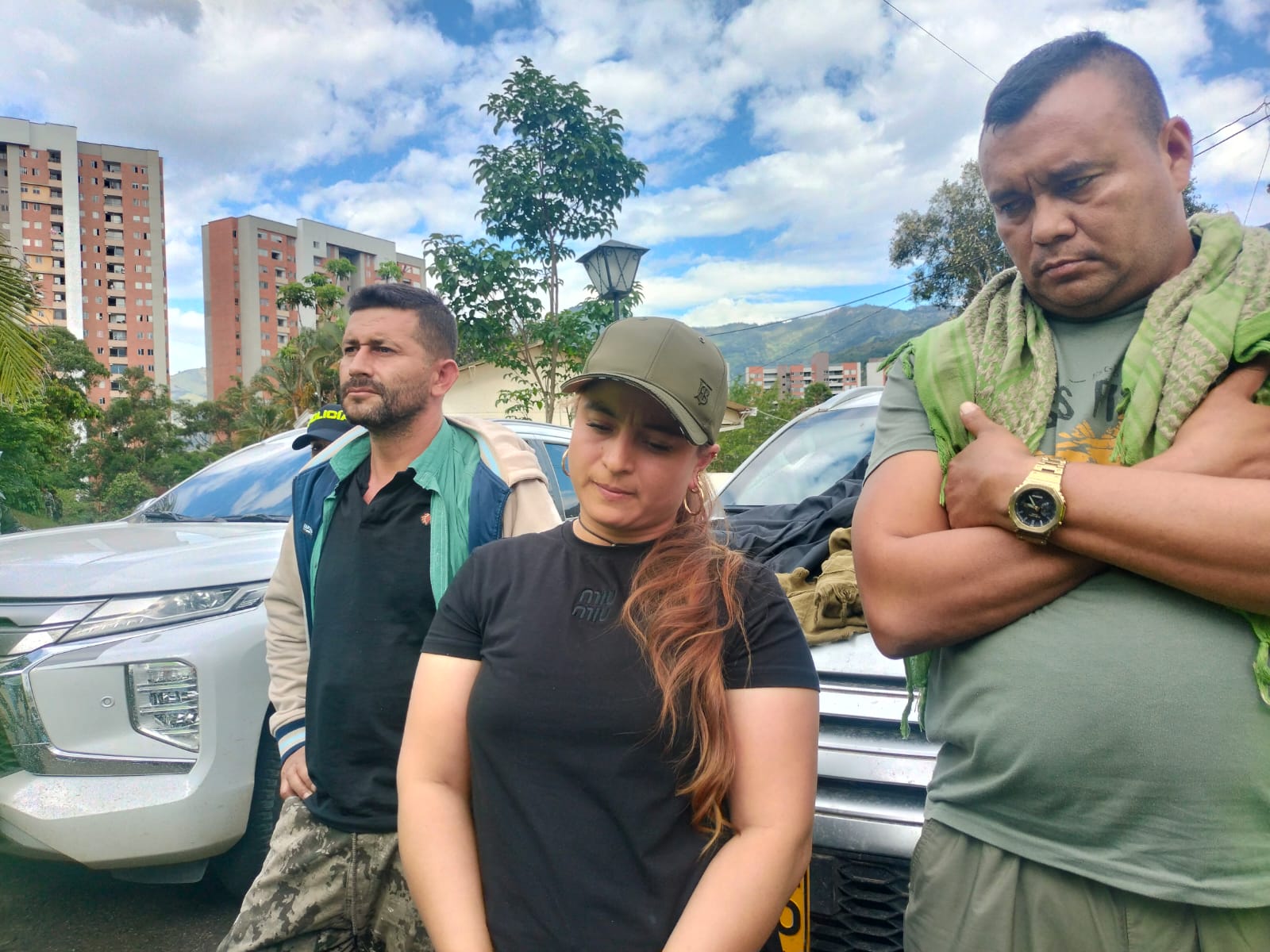
The Prosecutor's Office arrested alias Firu, leader of the 36th front of the dissidents. Photo: Colombian Military Forces
Although some members of the organization were authorized to travel in UNP vehicles—as part of the protocols signed by the Government to provide protection to those participating in the ceasefire verification mechanism—this authorization did not cover members not included in the process, not designated as peace facilitators, or with outstanding arrest warrants, as was the case with Firu.
Its structure This structure —which was commanded by Miguel Botache Santillana, alias 'Gentil Duarte', until his death in 2022— has a total estimated force of more than 1,162 combatants (572 men under arms and 590 in support networks) , according to a military intelligence report to which EL TIEMPO had access.
The bloc is made up of eight groups, among which the most notable for their violent actions are the Rodrigo Cadete Front, led by Juan Agudelo Salazar, alias Urías Perdomo, with a presence in Caquetá; the Raúl Reyes Front, led by Yeison Alexis Ojeda, alias Danilo Alvizú, with members in Amazonas, Caquetá, and Putumayo; and the Jhon Taylor or Arturo Díaz Commission, led by Auner Restrepo, alias Juan Carlos. The three groups have more than 280 armed men.
Other structures and substructures operating under this bloc include the Marco Aurelio Buendía Commission (aka Macoño), the Éver Castro Group (aka Caliche), the Jhon Linares Front (aka Baison or Barbas), the Darío Gutiérrez Front (aka Sergio Carvajal), and the Iván Díaz Front (aka Giovanni Bonito).
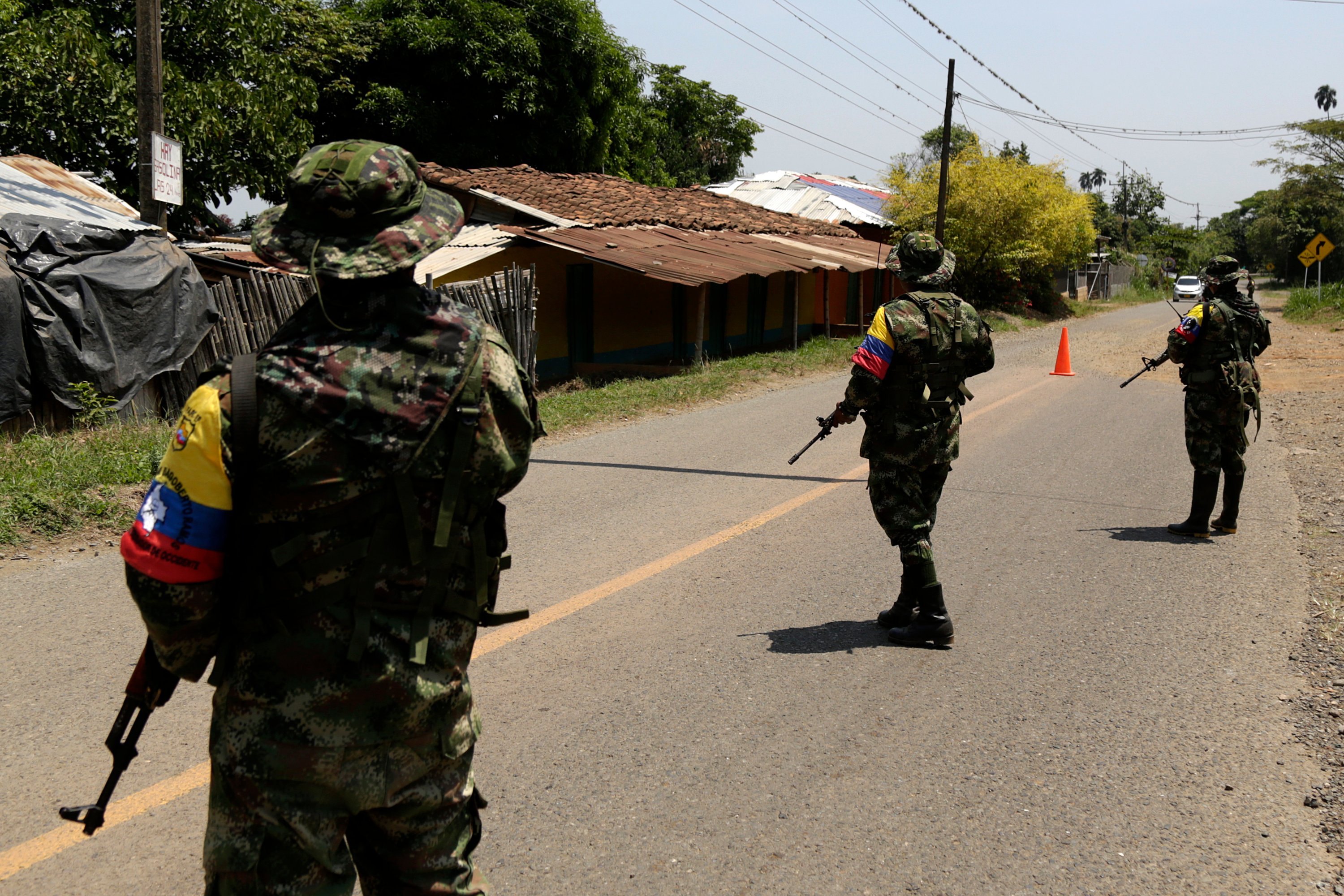
FARC dissidents. Photo: Juan Pablo Rueda. EL TIEMPO
“They are dissident organizations that rarely confront the security forces. Indeed, they are not that aggressive, although there are certainly cases, but that is not their main activity. Their main activity has been more related to certain illegal income, control of drug trafficking routes, and control of access to the territory. We could go back to 2020 and 2021, when they were notorious for impeding the work of international cooperation,” said Paula Tobo, a researcher at the Ideas for Peace Foundation.
The Jorge Suárez Briceño bloc, in turn, is one of the two structures that make up the General Staff of the Blocks and Fronts (EMBF) - which also includes the Magdalena Medio Gentil Duarte, alias Jhon Mechas, a structure that has already committed to locating itself in temporary location zones for its disarmament -, a faction that separated from the Central General Staff of Néstor Gregorio Vera, alias Iván Mordisco, in April 2024, after the Government suspended the ceasefire in Nariño, Valle del Cauca and Cauca.
The government decided to end the truce in response to a series of attacks by Mordisco groups against indigenous communities in Cauca, the murder of indigenous leader Carmelita Yule Paví, and multiple instances of harassment of law enforcement officers.
Although differences between Mordisco and Calarcá were already perceived months before the fracture, it was this fact and the decision of the commander of the Suárez Briceño to continue at the table with the Executive, which dynamited the criminal alliance
In this context, "Calarcá," along with alias Jhon Mechas, Carlos Eduardo García, alias Andrey Avendaño, and Óscar Ojeda, known as Leopoldo Durán, his main interlocutor at the table, decided to remain at the table with nearly 40% of the members of the dissident groups. For this reason, Mordisco accused them of "factionalism and treason" in a court martial held by the other dissident group last month.
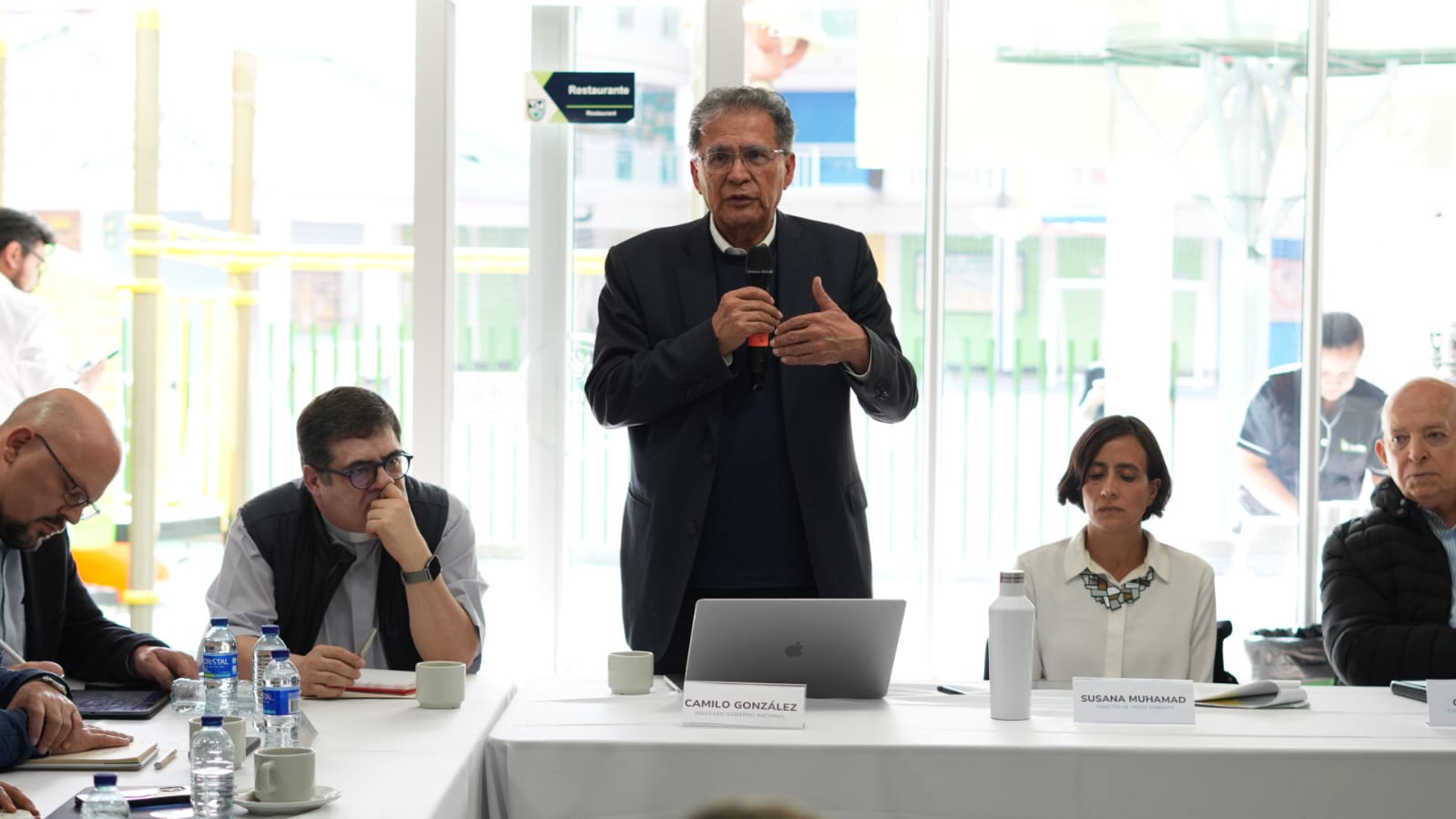
Camilo González Posso, head of the government delegation. Photo: Office of the Peace Commissioner
A year later, despite progress on issues such as territorial transformations, the expansion of the Amazonian arc, and community participation, the process is mired in a crisis that appears to be following the same path as others within the "total peace" project, which are currently suspended.
Fight for territory Currently, Calarcá, who was formerly commander of the FARC's 40th front, leads the bloc - presumably including the other structures that make up the EMBF - and maintains an intense territorial dispute in Meta, Caquetá and Guaviare with the structures loyal to Mordisco for control of illicit economies .
These structures, as is the case with Mordisco and as noted in a March 2023 report by the Ideas for Peace Foundation, "are a federation of groups under a single umbrella," but with "diverse interests, modes of operation, and degrees of coordination, as well as a great deal of autonomy in their operation at the territorial level."
In fact, one of the recurring criticisms of "total peace" is precisely that, in the interest of consolidating a single forum, it allowed the grouping of several organizations that did not adhere to the 2016 peace agreements, including the groups that currently support Calarcá.
“This government's peace commissioner, the first one, used state helicopters to pick up spokespeople for the various criminal groups calling themselves dissidents in different regions of the country, and in April 2023, they took them to Yarí (a region located between Meta and Caquetá). They were recognized as the FARC's Joint Chiefs of Staff . In other words, the government itself organized the dissidents ,” former President Juan Manuel Santos said at a forum this week.
The government itself organized the dissidents
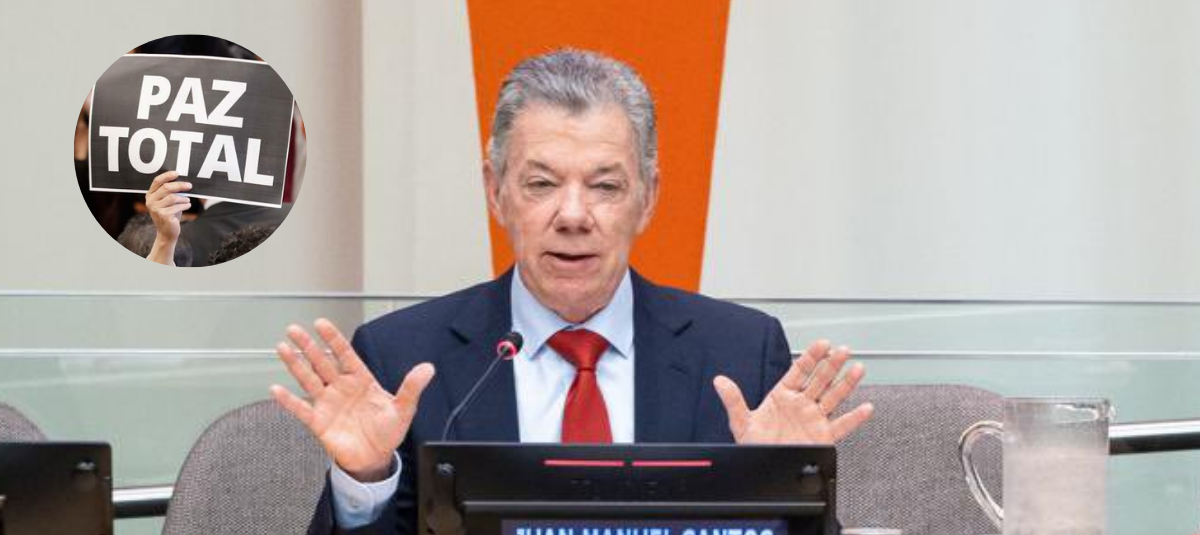
Former President Juan Manuel Santos. Photo: X Juan Manuel Santos
Santos is referring to the meeting that brought together all the structures that, at that time, had united to form the FARC's Central General Staff. Among the leaders who attended were "Mordisco," "Calarcá," and "Andrey Avendaño."
" I have to tell Santos that he's wrong; what he said is false. He doesn't acknowledge his own mistake, which is nothing compared to that of the government he succeeded. Santos forgot Duque's name because now he wants to ally himself with him ," President Petro responded.
This episode, along with the subsequent fragmentation of the group and its territorial expansion, has facilitated the consolidation of forms of criminal governance in different regions of the country.
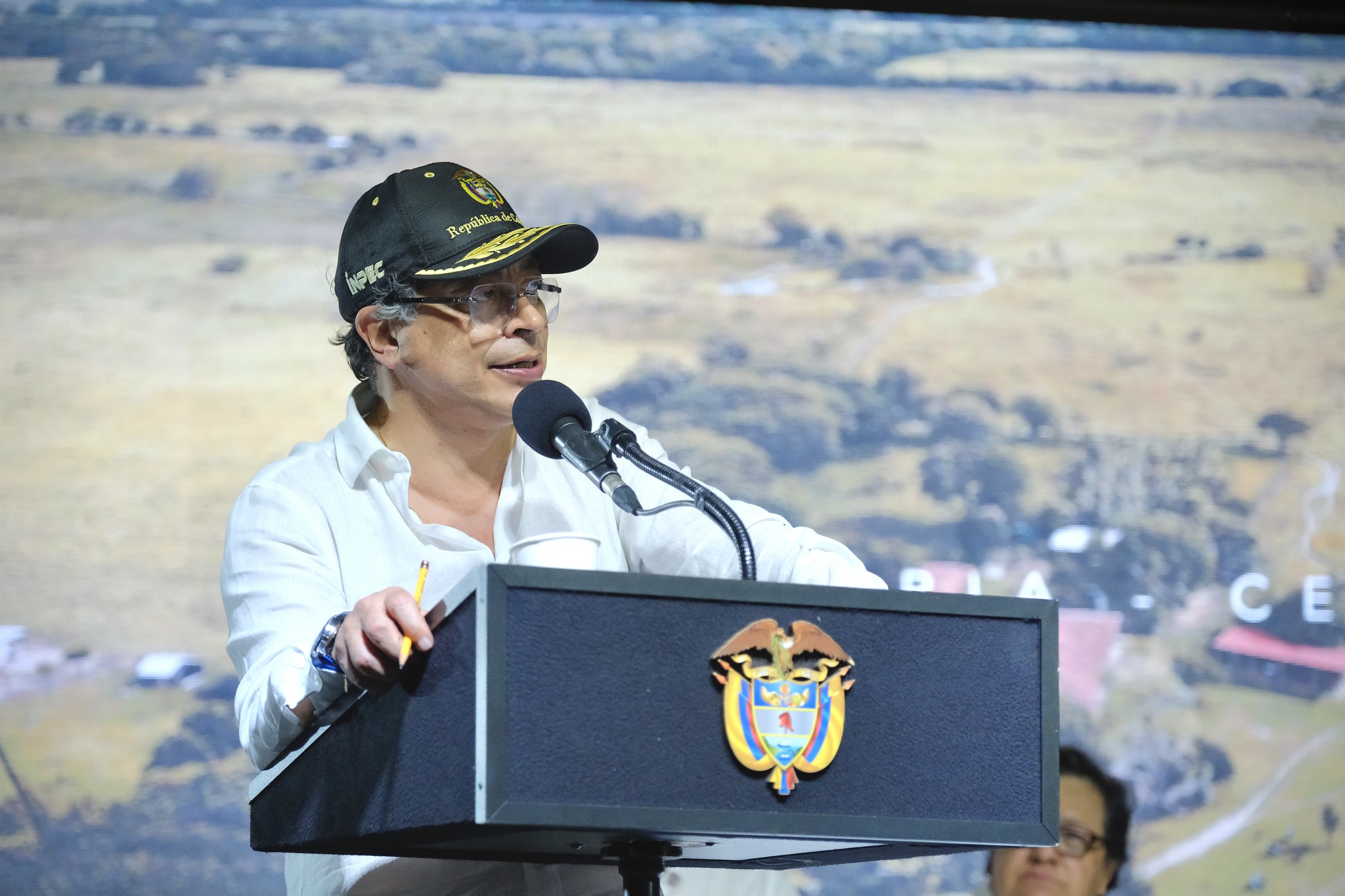
President Gustavo Petro in La Gloria, Cesar. Photo: Presidency.
Tobo added that one aspect to keep in mind in this process has been the intention to gain political recognition through the co-optation of the territory's civilian population. "That makes them a little different from other dissident groups that have had a somewhat more difficult path in connecting with the community, but this doesn't mean there's a very clear affinity in this territory," he added.
One of the most representative episodes of what Tobo describes was the construction of a school in the El Triunfo neighborhood of San Vicente del Caguán (Caquetá). The project, which included community contributions and labor provided by dissidents, was initially named "Gentil Duarte." Although the government intervened, took control of the school, and renamed it the Sabanas del Yarí Agroecological Institute, the event revealed the level of social and territorial control these structures have exerted.
Camilo Castillo and Jesus Blanquicet
eltiempo





